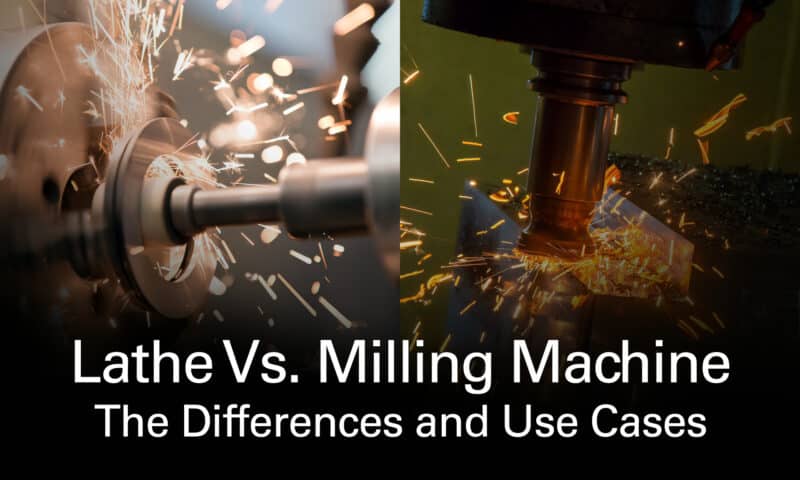A lathe and a milling machine are the two most important workhorses of any complete machine shop. With either one, you can perform many of your fundamental machining techniques. Each is great at cutting away metal.
But there’s an essential difference between these machines.
And that difference means that each one is best suited to different operations, applications, and projects.
In this article, we’ll compare a lathe vs. a milling machine equipment, taking a look at key differences and use cases so you can make the right call for your shop.
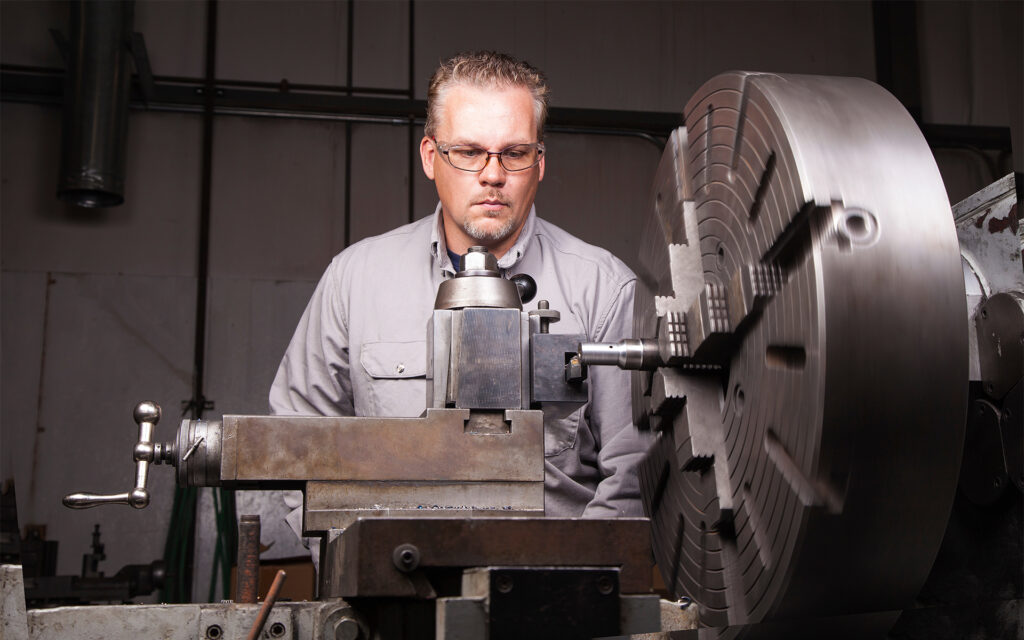
What Is a Lathe?
A lathe machine is a versatile machine that spins a metal workpiece at high speed. By bringing a non-rotating cutting tool against the rotating but stationary workpiece, you can cut and shape metal in many different ways.
Some people get confused by the distinction between a wood lathe and a metal lathe. The differences between these two types of machines really comes down to what (or who) holds the cutting tool.
On a wood lathe, the machine’s operator holds the cutting tool. The operator moves the piece by hand to create complex shapes. Because a wood lathe requires manual operation, you can only use it for wood and cannot use it for metal.
On a metal lathe, a part called the tool post holds the cutting tool in place, and the tool moves on the carriage.
This makes a metal lathe much more versatile because the lathe can be used on wood or metal. Or just about anything else you can put in it for that matter.
Use your lathe to machine a wide variety of parts with precision and efficiency.
But you can’t do everything on a lathe. The capacity of your lathe also limits the size of the workpiece you can accommodate.
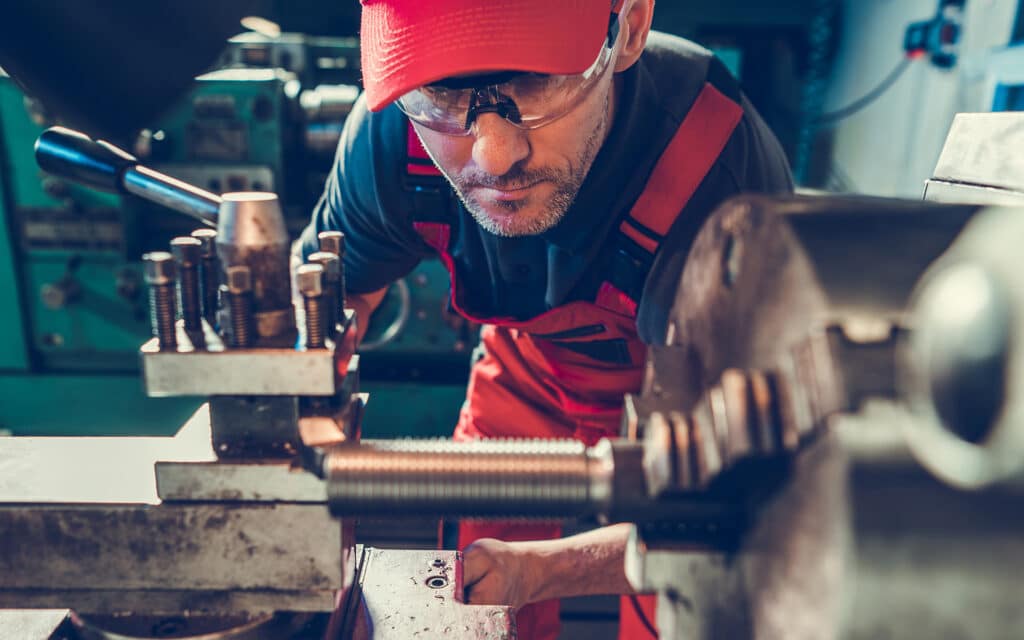
When Should You Use a Lathe?
If you’re shaping something cylindrical or symmetrical, you’re probably doing it on a lathe.
Use a lathe for anything that involves the core machining operation of turning.
Typically, turning removes excess material from the outer diameter of a workpiece with a facer, grooving tool, or other cutting head. But you can also remove material from the inside of a workpiece with a boring bar or the flat surface opposite your chuck as long as the amount of stick-out isn’t unsafe.
Turning techniques on a lathe machine include:
- Core facing
- Threading
- Boring
- Creating grooves, threads, and tapers
- Drilling center holes on turned pieces
If you want some fresh ideas to try out on a lathe, check out our guide to some neat metal lathe projects.
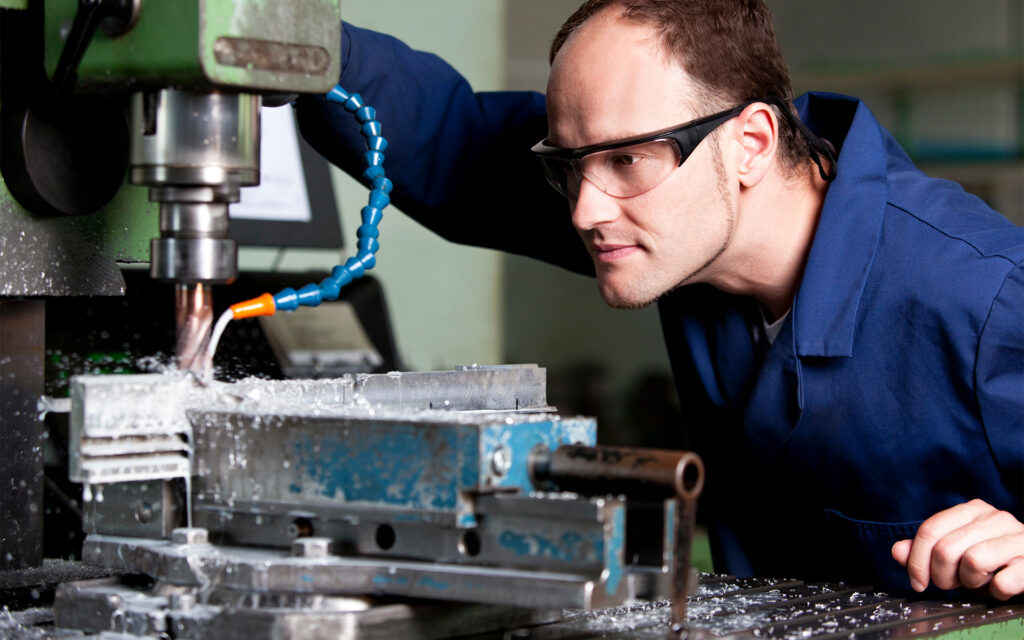
What Is a Mill?
A mill is a machine that cuts metal by rotating a cutting tool, or spindle, rather than the workpiece within tight tolerances.
The tool itself is held in a tool holder either in a fixed position or it can be raised or lowered to meet the workpiece. To make your cuts, you move the workpiece along an axis perpendicular to the spindle axis against a rotating but stationary cutting tool.
If you’re a woodworker, you might be thinking about a router now and how your router does the same thing.
Well, you would be correct. Except, much like the difference between a wood lathe and a metal lathe, the difference lies in who holds the cutting tool.
On a router, an operator holds the cutting tool in a handheld machine. The operator moves around inside the workpiece to create the needed shape. This makes a router a good woodworking tool but impossible to use on metal.
A milling machine holds the cutting tool much more securly, making it possible to perform cutting operations on both metal and wood.
Milling machines, like the well-known Bridgeport style of vertical mill or knee mill, offer precision capabilities for complex parts.
But they aren’t great for round shapes. And just like a lathe, the capacity of your mill will limit the maximum size of your workpieces.
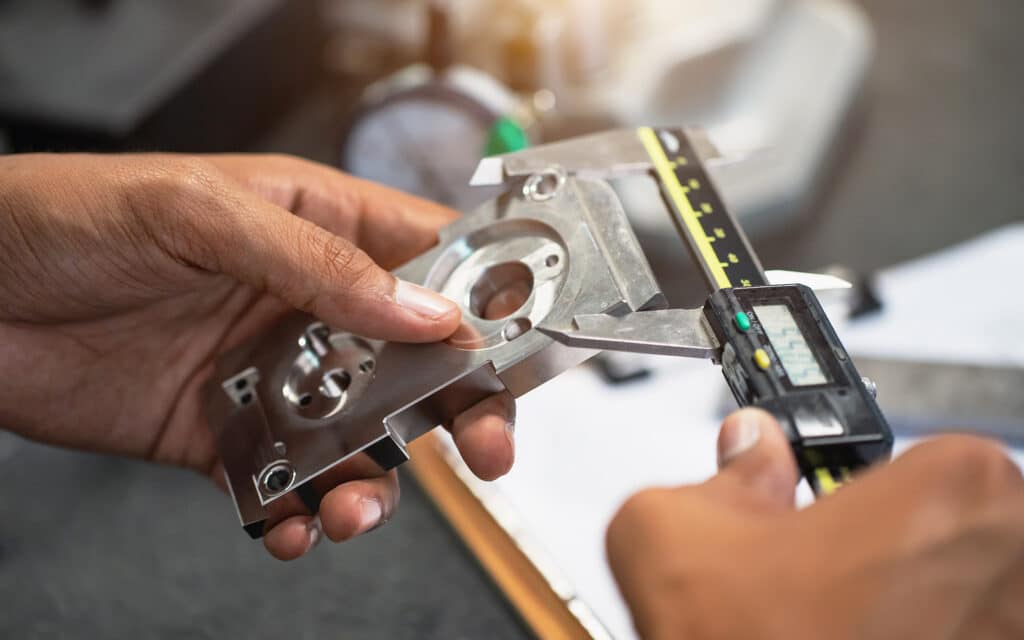
When Should You Use a Mill?
While a lathe is the way to go for cylinders and symmetry, a mill is ideal for when a machining process involves creating flat surfaces and irregular surfaces, gears, grooves, and other features.
With all the different cutting tools available, you can use your mill for a wide array of operations, including:
- Boring holes
- Cutting slots
- Shaping intricate part geometries
- Drilling
You might think of a drill press for that last task on the list, but a mill allows you to drill holes much more precisely.
For a list of projects, you could do on a mill, check out our milling machine project ideas.
Which One Is Better?
In truth, the answer is neither and both.
They are both perfect complements to one another, like peanut butter and jelly.
A metal lathe and a milling machine are also key complements to the fundamental metalworking tools in your home machine shop. The lathe is for your cylindrical and symmetrical shapes. The mill is for non-cylindrical workpieces.
They work together to create complex shapes and can both be used on wood, metal, plastic, or a variety of other materials.
But you might only have space and budget for one of them. The decision will come down to a variety of factors—projects you want to do, machining operations you want to use, even things like headroom in your shop.
Depending on all that, a lathe is a good starting point for hobbyists. Partly because, with the right skills, you can do (nearly) all the milling you need on a lathe. But not necessarily vice versa.

Plan. Prepare. Produce.
It’s good that you’re thinking through the issue of lathe vs. mill. Because, like all things machining, proper planning is crucial.
Machining is a precise discipline (tips for beginning machinists here). The more measured your approach, the more successful you will be. But ultimately, you have to try it and see what works for you!
So whether you start with a lathe, a mill, or both, keep this in mind: Given the horsepower you need to cut metal, a 3-phase machine will provide smoother operation—meaning better surface finishes, longer tooling life, and less scrap.
No 3-phase power in your shop? No problem! An American Rotary phase converter will provide the reliable, efficient 3-phase power. In fact, with the right sizing, it will power any three-phase machine and peripherals in your shop at the same time.
Contact us today to discuss the power requirements for your shop.



